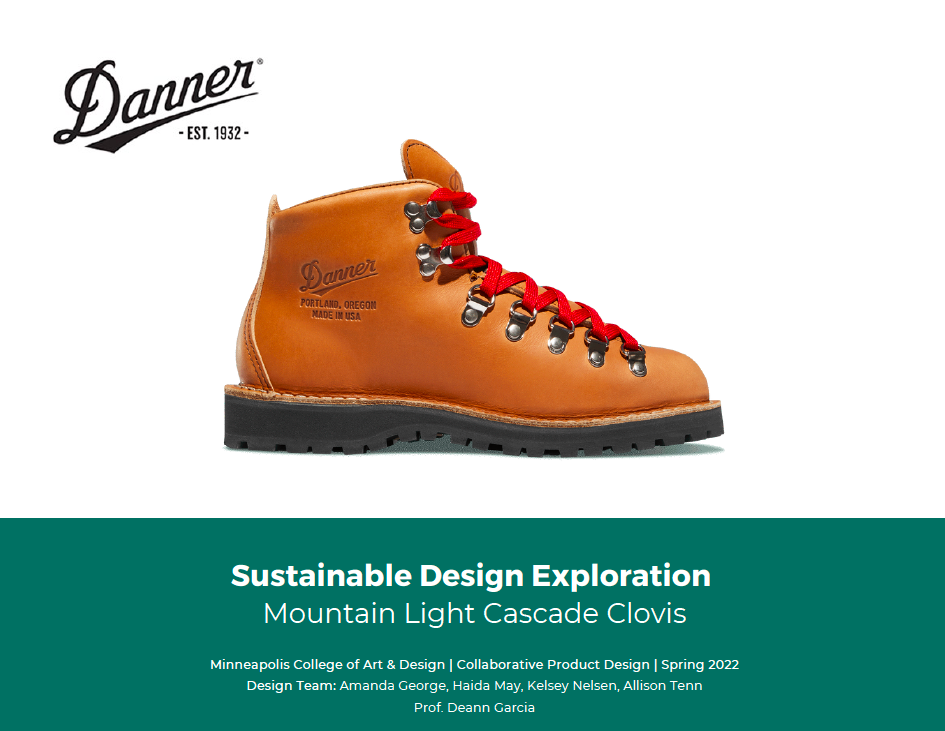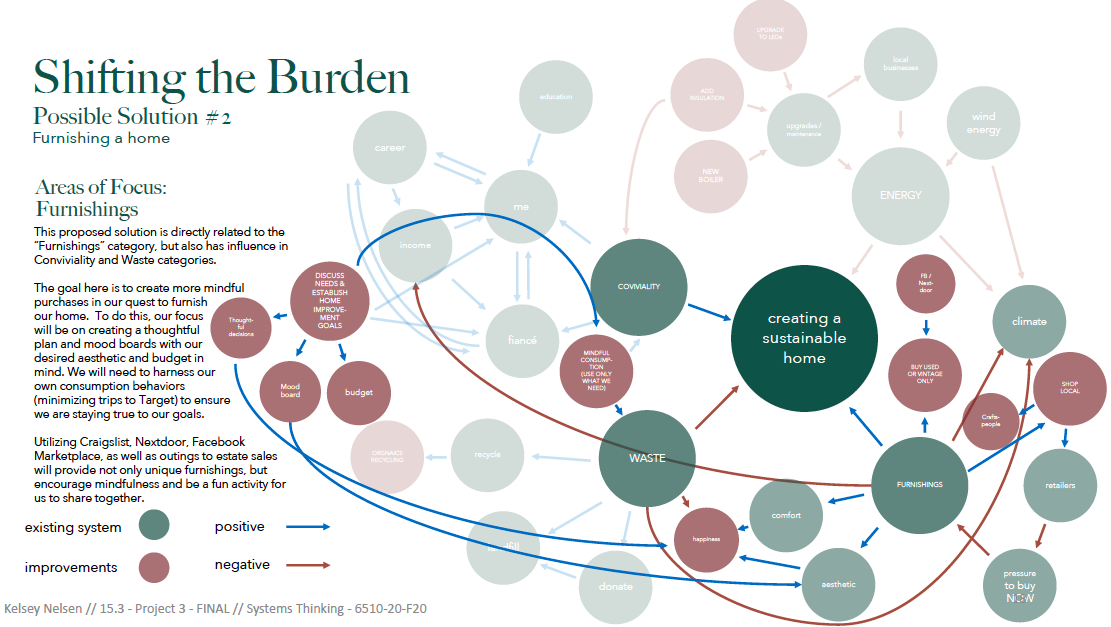MA in Sustainable Design Portfolio
Sustainability Statement
“As a soft goods product designer and sustainability professional, I am determined to influence the fashion industry to make responsible decisions and consider the full use cycle of a product earlier in the design process.“
- Kelsey Lee Nelsen Barajas
MASD Program Highlights
From Synthetic to Sustainable: A Guide For Soft Goods Specifiers
Graduate Thesis, Spring 2023
Image Source: Photo by Ethan Bodner on Unsplash
This thesis addresses the need for soft goods materials specifiers to shift from using synthetic materials by developing actionable solutions for change. This project incorporates design thinking and systems thinking along with independent research on ESG reporting, interviews, and a survey specific to specifiers to gather both qualitative and quantitative data. This research asserts that polyester is an unsustainable material that spreads and persists as microplastics in the biosphere causing harm to all stakeholders, including the planet itself.
Business Plan:
Experiential Event Space
Making the Business Case for Sustainability, Fall 2022
Image Source: Photo by Adriel Kloppenburg on Unsplash
This is a business plan for an event space dedicated to creating meaningful connections and collaborative relationships with people, belongings, and lived environments. This gathering place aims to help people rethink what it means to connect by offering a space to gather, share, and an opportunity to reconnect with one’s own creativity.
Materials Specification in Apparel Design and the Resulting Impact of Microplastics on the Environment
Thesis Proposal, Spring 2022
Visual Content Source: Kelsey Nelsen
My proposed thesis explores the impact of microplastics from the fashion industry as a result of specifying synthetic fibers in the design phase. I plan to explore the system of material specification and identify an opportunity to intervene in this system to provide education or a resource to mitigate this impact.
A Collaborative Sustainable Design Exploration
Collaborative Product Design, Spring 2022
Image Source: Kelsey Nelsen, Amanda George, Haida May, Allison Tenn
In this 8-week long project, I collaborated with three other MCAD students and our client, Danner Boots. We took a closer look at a redesign of their classic product, the Mountain Light Cascade Clovis boot in weekly meetings. Together, we determined the project scope, needs, and boundaries around the improvements of this heritage boot. We concluded that the boot itself is durable and uses quality materials, so the biggest opportunity was to communicate with the customer base around ways to extend the useful life of the product, offer expanded recrafting services, and unique ways to use off-cut materials.
I contributed significantly to the Lifecycle Analysis and offered the recommendation to use off-cut leather in a collection of “Imperfect Boots” or offer boots in children’s size that require smaller pieces of leather, ultimately increasing the leather yield.
Group members included myself, Amanda George, Haida May, and Allison Tenn.
Leadership Models in Nature
Creative Leadership, Spring 2022
Image Source: Kris Mikael-Krister via Unsplash
A source of inspiration, this work explores leadership types found throughout our natural world. To be a creative leader is to draw on and be inspired by the systems around us. You never know where your next source of insights may come from, it may even be from a swarm of bees or the collaborative root systems of fungi and trees.
Synthetic Fibers in the Apparel Industry
Practice of Sustainable Design, Fall 2021
Diagram Source: Kelsey Nelsen
This work explores the issue of synthetic fibers in the apparel industry in order to understand the environmental, economic, and behavior impacts that have resulted from fast fashion — and how to mitigate future risk and encourage healthier tendencies for people and the planet.
I researched the impacts of both synthetic and natural fibers, brainstormed areas of focus for the project, and created life cycle diagrams and assessments in order to understand the materials of focus. The project resulted in a preliminary plan for my thesis work: an explainer video targeted to specifiers in the apparel industry to encourage sustainability-focused decision-making earlier in the design process and a commitment to designing with “No New Polyester”.
A Sweater Inspired by Nature
Biomimetic Design, Fall 2021
Sketch Source: Kelsey Nelsen
Recently, we have learned of the abundance of microplastics in our environment as a result of synthetic fibers used to make our clothing. Specifiers of the apparel industry have made it the norm to create disposable clothing, quickly, at a rate much faster than humans can dispose of the waste and at a scale that will take thousands of years to decompose.
In this project, I looked to nature for inspiration to develop more functional clothing and to develop a “super” garment, a garment with superior properties, to promote quality over quantity. In this exploration, I sought to create a sweater that retains warmth using life-friendly materials. Understanding how nature’s strategies are used to perform various functions is crucial to creating life-friendly clothing. I explored the possibilities through the Challenge to Biology design spiral and the subsequent steps: Identify, Translate (Interpret), Discover, Abstract, Emulate, Evaluate.
The Alpaca Project
Fundamentals of Sustainable Design, Spring 2021
Image Source: pvdberg via Adobe Spark
This project explores the dynamics of a business based on regenerative agriculture and the benefits that a systems view can bring to all stakeholders through the evaluation of the triple bottom line (people, planet, & profit).
The Alpaca Project is a prospective business opportunity intended to bridge the gap between regenerative agriculture, community engagement, and financial stability. Thinking of alpacas and alpaca farming from a systems approach allows us to see more opportunities going beyond the niche alpaca product gift shops that supplement the business of alpaca farming today.
The Sustainable Travel Toolkit
Innovation Tools and Techniques, Spring 2021
Diagram Source: Kelsey Nelsen
In early 2020, with the beginning of the global pandemic, the concept of travel took a dramatic shift. The airline industry took a big hit, according to an article by the Wall Street Journal, “travel is one-third of what it used to be.” Yet, in that same article, it was reported that ”global CO2 emissions fell by 8.8% globally.”
This project explores a solution to travel more intentionally with the environmental impact in mind. I utilized design thinking and variety of brainstorming techniques to develop an app for sustainable travel. Key features include the “Goal Based Itinerary” and an “Emissions Dashboard.” While environmental impact was the focus of this case study, further iterations would incorporate people and profit.
Sustainable Living & Home Ownership
Systems Thinking, Fall 2020
Diagram Source: Kelsey Nelsen
Buying a home is a big commitment, both financially and emotionally. Whether deciding to buy a new-build, an old home, or take on a renovation project any home buyer will want to be certain they are purchasing a house that they can make into a home.
For this project, I explored several different systems approaches in sustainability to understand how a home can become more sustainable. Much of the focus is on how to turn my ”new” old home into a more sustainable urban abode. From dissecting the system through a biomimicry lens, to drawing rich pictures, understanding influences and archetypes, it appears this system and [all others] are continuously evolving and can be approached from an infinite number of ways.









